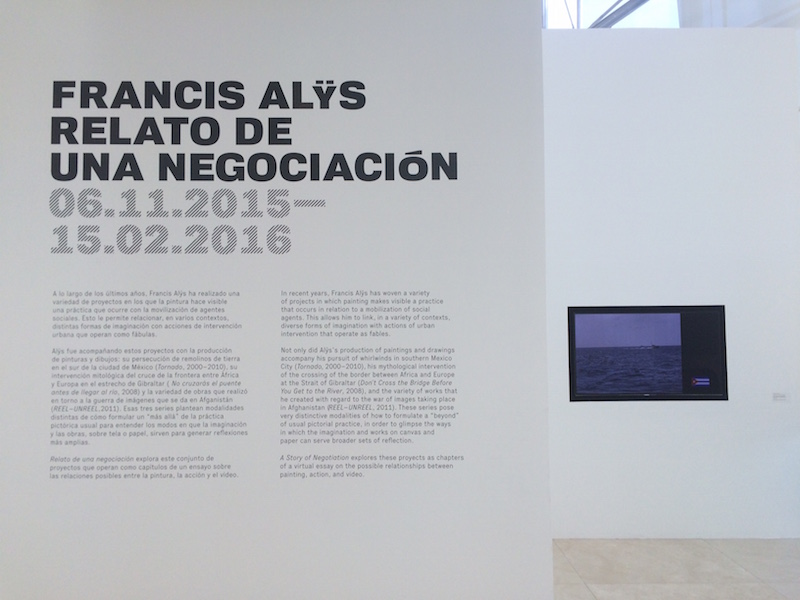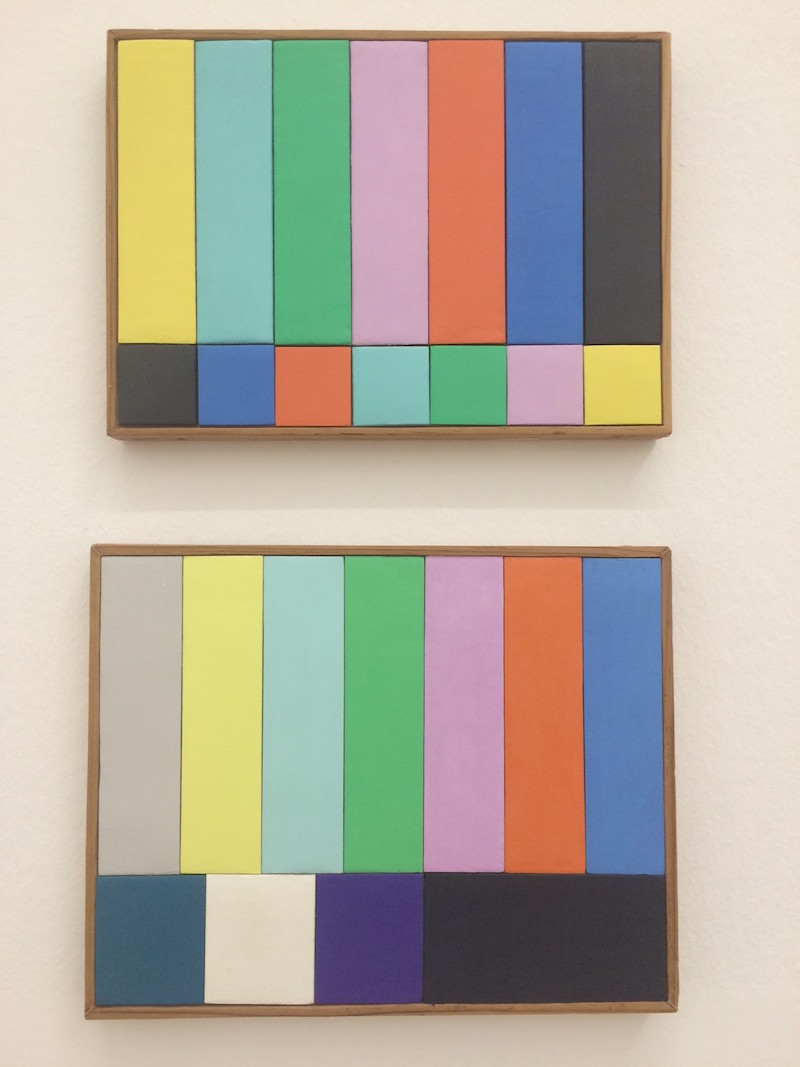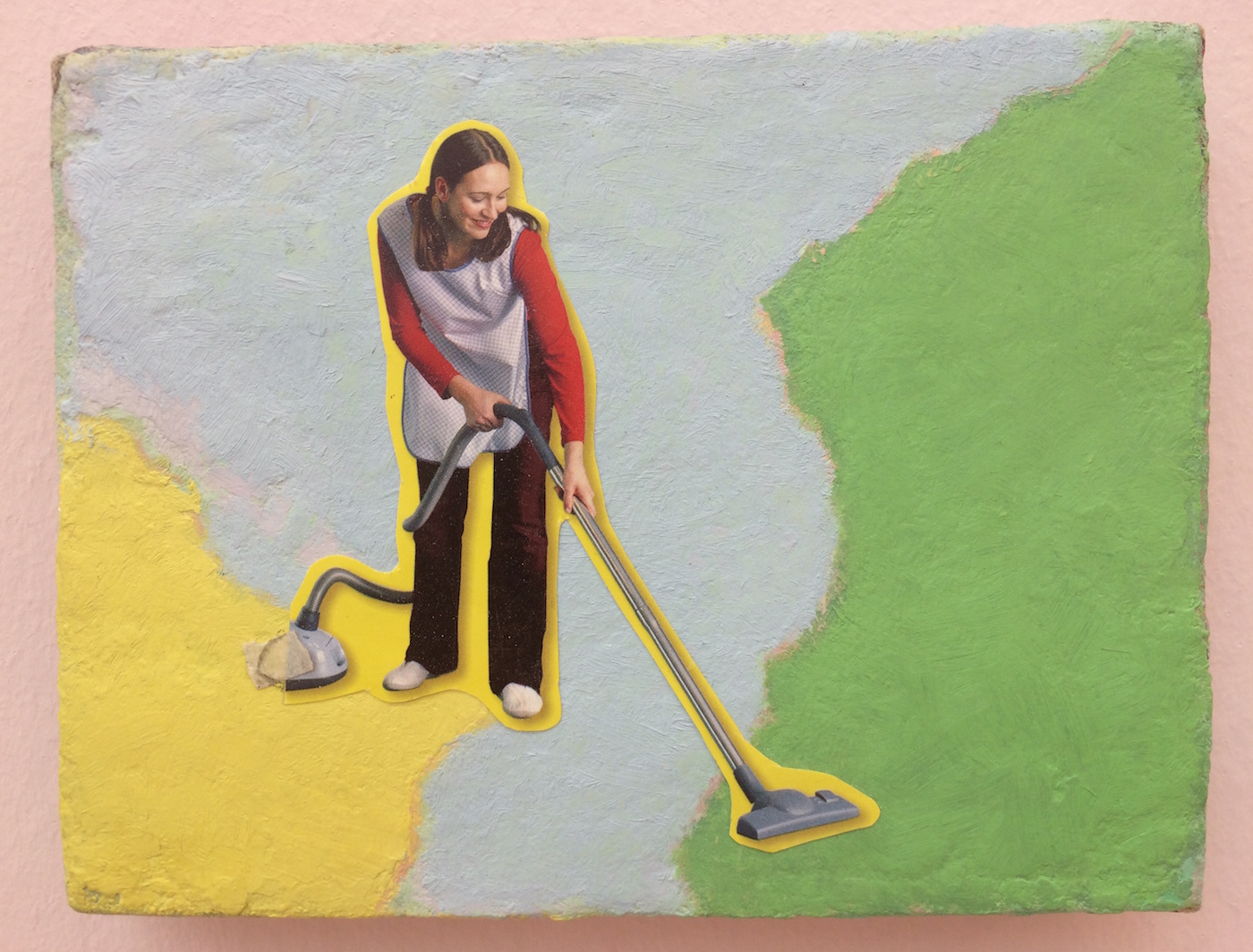A Story of Negotiation Reviewed by Kerr Houston
You may well know of Francis Alÿs’ diverse and profound work even if you don’t know his name. Perhaps you’ve heard of his Green Line (2007), in which the Belgian artist (who has long been based in Mexico City) walked a stretch of the border between Palestine and Israel while carrying a leaking can of green paint – thus leaving, in his wake, a wobbly line that subtly evoked Pollock’s drip paintings while gesturing at the same time to the arbitrarily constructed aspect and concrete consequences of political borders.
Maybe you’ve read about his Paradox of Praxis 1 (Sometimes Making Something Leads to Nothing), a 1997 video that documents Alÿs’ efforts as he pushed a large block of ice through the streets of Mexico City for nine hours, until it melted into nothing. Maybe you’ve seen When Faith Moves Mountains (2002), in which 500 Peruvian volunteers, working with nothing but shovels, manage to move an immense sand dune several inches.
Or perhaps, more generally, you’re simply alert to his distinct combination of play, poetry, and political criticism, and his abiding interest in exploring in the intersections of labor, migration, and spatial justice. Regardless: over the past decade, Alÿs has become a remarkably important and visible – and familiar – artist.

An intriguing ongoing show of Alÿs’ work, though, attempts to recast the artist and his oeuvre in a very basic way: by emphasizing, that is, the place of painting in his practice. To be sure, Francis Alÿs: A Story of Negotiation (which is at Buenos Aires’ MALBA through February, and will travel to Havana, Toronto, and Los Angeles) is hardly revisionist. Curated by Cuauhtémoc Medina, who has often collaborated with the artist, the show is largely organized around three videos, which act as thematic anchors.
Although well known, each does reward a further look. In the 2008 video Don’t Cross the Bridge Before You Get to the River, for instance, two lines of children carrying flimsy toy boats made out of sandals process into the waves on either side of the Strait of Gibraltar, as if to create an unbroken line across the sea – only to give way to the hectic scumble of the surf. In Tornado (2000-10), the artist repeatedly tries to run into the eye of the potent twisters that regularly spring up in the desert sands of northern Mexico – yielding, in the process, harried and jerky videos that suggest at once the vulnerability and the manic obsessiveness of man in the face of nature. And in Reel-Unreel, a 20-minute video (first shown at dOCUMENTA (13) in 2011), two children seem to compete in unspooling and then rewinding reels of film as they run through the streets of Kabul. Such projects present a basically futile imposed task in a melancholy and affecting light; as other critics have noted, too, they suggest a consistently poetic and fabular aspect.
But this show ultimately wants us to think too about the conceptual and artistic work that precedes, accompanies, and undergirds Alÿs’ video work. (Indeed, the show clearly states in a wall text that one of its fundamental aims is to present Alÿs’ paintings as “part of an oeuvre which is conceived as a larger whole.”) To that end, it includes a number of newspaper clippings, notes, sketches, maps, sculptures, postcards, and paintings, all of which relate to more general projects.
The result is absorbing, as one can watch Alÿs develop a new idea (“Sometimes doing is undoing,” reads a note made in Afghanistan. “Sometimes undoing is doing”) or see him experimenting with variations on a theme. This is particularly true of the several dozen paintings on view, which – although they tend to be small, and formed of delicate strokes – generally revolve around a certain concept or motif: maps of land masses separated by water, for instance, or the Afghan cityscape. Their modest dimensions and serial aspect grant them a quietly intellectual aspect; they feel like études, or meditative exercises. Or, to put it slightly differently, they offer an interesting variation on the paseos for which Alÿs first became known: urban walks that were rooted simultaneously in the radical exercises of the Situationists and the impossible quests of ancient myths (Psyche, walking through the Underworld, or Sisyphus, struggling up his hill). Like those walks, his paintings are also process-driven, open to possibility and recombination – and thus of a kind with his larger body of work.

That relationship is especially evident in the final portion of the show, which is devoted to work that Alÿs executed between 2010 and 2014, while embedded with the British army in Afghanistan. While there, the artist was clearly struck by the fraught status of the representational image in that country; his notes refer, for instance, to the Taliban’s efforts to destroy the contents of Kabul’s National Film Archive. What shape, then, could his own practice assume in such conditions?
His paintings from the period represent an attempt at an answer, as Alÿs gravitated towards motifs that were at once abstract and replete with referential meaning. One series of works reproduces the patterned colored patches worn on the sleeves of soldiers: known as tactical recognition flashes, the forms are resolutely geometric even as they communicate a nuanced institutional logic. And in a second series, Alÿs painted variations on the colored bars once used to calibrate televisions – thus generating a series of abstract works that nevertheless also allude to the circulation of representational imagery. You can feel, as you look at these works and related source materials, the artist exploring, groping – and then finally settling on a strategy.

And it is a strategy, for the works also reveal a sharp critical edge. For example, Alÿs’ interest in reproducing symbolic patterns faintly recalls Jasper Johns’ celebrated paintings of flags and numbers, which also managed to thwart a facile dichotomy between representational and non-representational art. But Johns, of course, was merely challenging the formalist logic of Clement Greenberg; Alÿs, by contrast, was navigating a war zone in which an artistic gesture or an allusion to television can automatically inspire a violent response.
The paintings thus necessarily acquire, despite their modest dimensions, an air of resistance: they occupy and proclaim a contested space. They are arguments, you might say, for the place of painting (and, by extension, of art) in a setting that would seem inimical to aesthetic contemplation.
So: should Alÿs’ work then be called political? That’s a word about which Alÿs feels real ambivalence; in a recent interview he asked Silvia Rottenberg to term his practice social, or engaged – but not political. At other moments, though, he has willingly invoked the term in describing his practice (“For the moment,” we read in a journal entry on view at MALBA, “I am exploring the following axiom: Sometimes doing something poetic can become political and sometimes doing something political can become poetic”).
Moreover, his work in Afghanistan seems to offer, if quietly and allusively, a critique of the chasm between the conditions of life in Afghanistan and corresponding representations in the foreign media. By drawing our attention to the distinction between real and unreal, and by depicting the color bars of a television as blunt, opaque forms, Alÿs suggests that the outsider’s view of Kabul is filtered, partial, and ultimately limited. Call it political or not, then: regardless, his practice is hardly toothless.
That said, though, the current show also suggests that Alÿs’ notion of political activity depends on a slight twist to a traditional idea: the idea, that is, that art is essentially functionless. In several of the materials on display, Alÿs contrasts his artistic practice with engineering and military projects. In a 2006 journal entry, for instance, he writes that “The difference between a military operation and an artistic gesture lies precisely in the missing fragment of the bridge: the gap that has to be filled by our imagination.”
Art, in such a view, is that which does not quite serve a practical end, or is not eminently useful (or as Richard Serra has put it, in his own version of the same idea, “To deprive art of its uselessness is to make other than art”). But note Alÿs’ precise phrasing: from his point of view, art also requires an imaginative contribution in order to do its work. Art, here, doesn’t merely fulfill a structural need; instead, it creates a space for our own creative contribution. If there is a political theory undergirding Alÿs’ work, then, it depends upon a notion of action as participatory and inventive.

All of which means, finally, that conventional notions of success and failure need to be recalibrated in looking at his work. Strikingly, Alÿs speaks recurringly of failure; indeed, you could call failure one of the show’s primary themes.
As Sara Christoph has observed, Alÿs’ Afghan paintings allude to failure on several levels: to his inability to coherently process his experience there, for instance, or to the failure of the West to comprehend the local situation. And in a wall text accompanying Puente, a 2006 project in which Alÿs invited members of the fishing communities of Havana and Key West to participate in the creation of an improbable bridge of boats between the two islands, we read that “the action was not altogether satisfactory given the imbalance of participation and the false dialogue implied by its clandestine nature.”
In short, the work came up short on both formal and narrative levels. Granted, such language is voguish at a time when life counselors speak of having the courage to fail. But, in the work of Alÿs, failure is in fact essential to the artistic act. By showing us what is not quite possible (the block of ice cannot survive the heat; the children cannot cross the strait), he allows us to think of what might be possible.
Painting, of course, can seem patently absurd or futile in a world in which migrants regularly drown at sea and environmental conditions continue to deteriorate. But Alÿs’ work suggests that it is precisely in the face of futility that creative acts can take meaningful shape.
Francis Alÿs – Cut from Museo Tamayo on Vimeo.
Indeed, a secondary video in the show reinforces that point, and thus act as a conceptual frame for the exhibition as a whole. Entitled Cut, it shows Alÿs quickly and earnestly using a circular saw to cut a straight line through a painting of a landscape – a painting, it turns out, that he himself painted, in a rough homage to 19th-century images of the South American tropics. At first glance, his violent gesture thus feels like a condemnation of an entire genre, and of his own work as a painter: it suggests a cool antipathy to the passive, timid irrelevance of traditional panel painting. But as we consider it, we’re also reminded of vaguely comparable acts by artists such as Lucio Fontana and Gordon Matta-Clark, and in the process the video opens up entirely new possibilities: a destructive act thus becomes a transformative one, and futility is converted into a sort of fertility.
The parade of children marching into the sea disperses; the block of ice melts; the film reels unspool. Art is fragile, and it can seem indulgent or even irresponsible when compared to the blunt utilitarianism of an engineering project or a military base.
But remember: Scheherazade saved her life by leaving her rich narrative incomplete, and Penelope undid her weaving nightly, in order to avoid the claims of her suitors. Francis Alÿs’ projects frequently seem to be interested in futility, and they can even be said, in certain senses, to fail. But as this intelligent show demonstrates, sometimes futility and failure can constitute a form of success. Sometimes undoing is doing.
Author Kerr Houston teaches art history and art criticism at MICA; he is also the author of An Introduction to Art Criticism (Pearson, 2013) and recent essays on Wafaa Bilal, Emily Jacir, and Candice Breitz.





